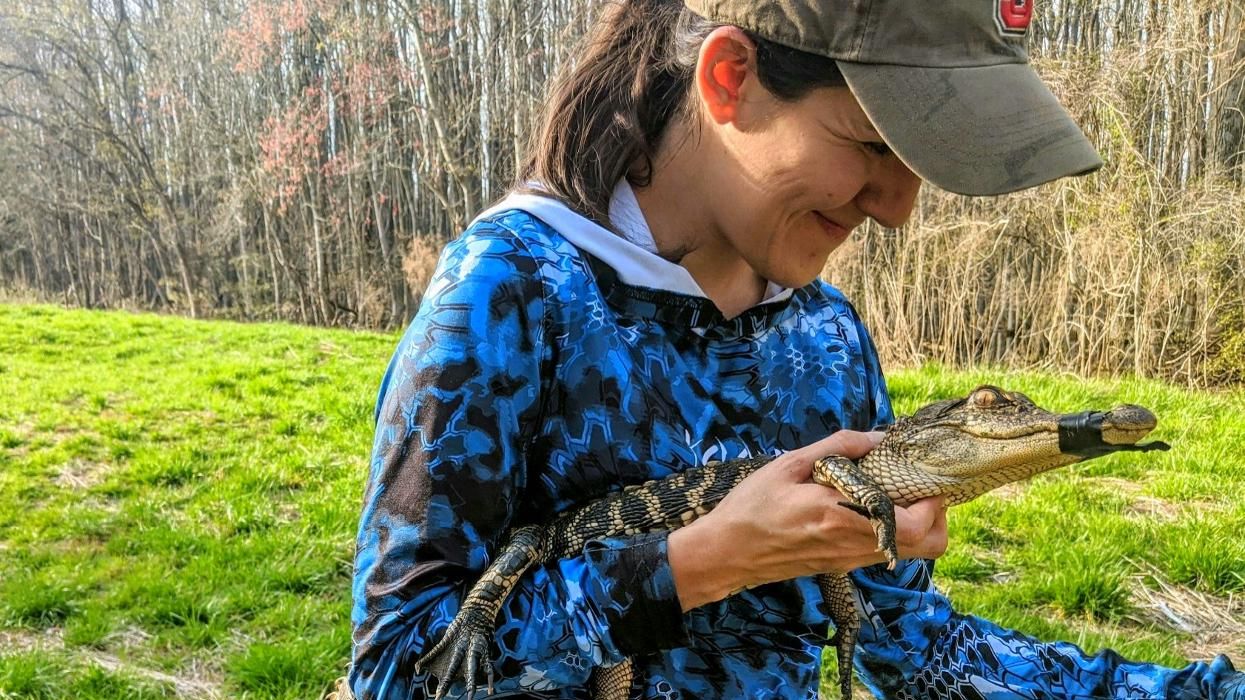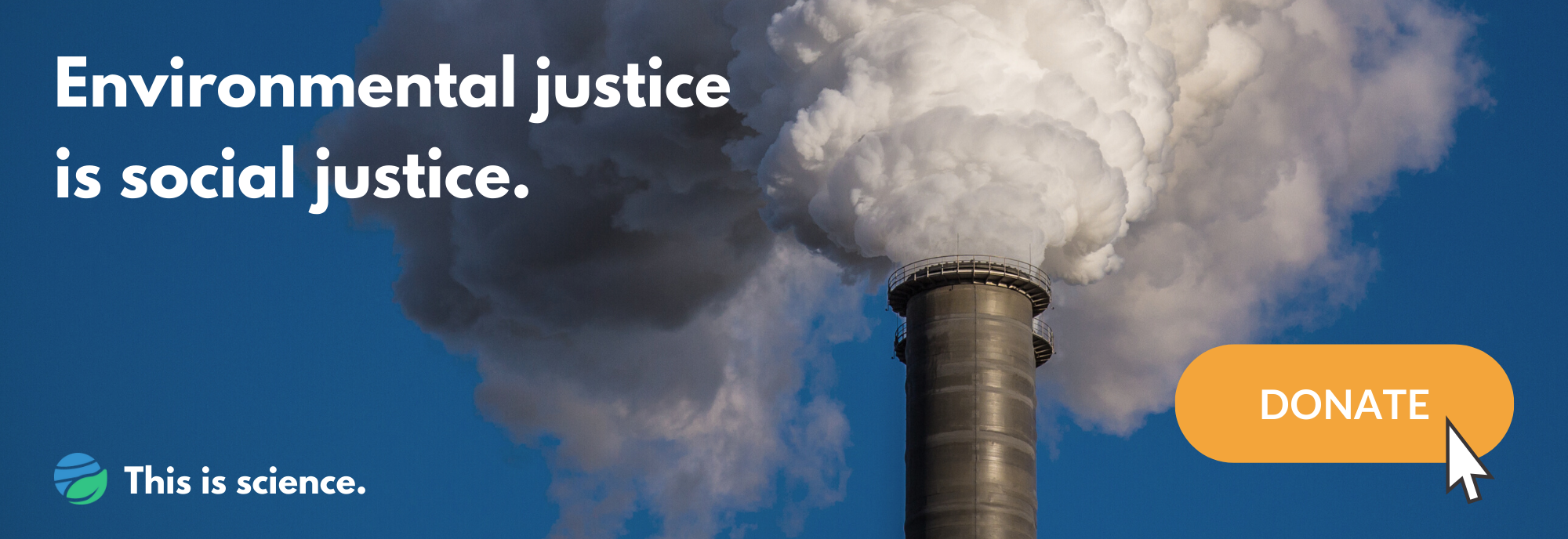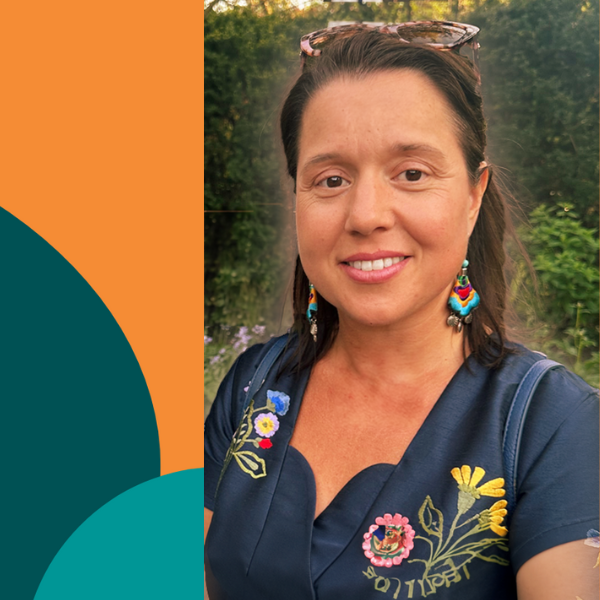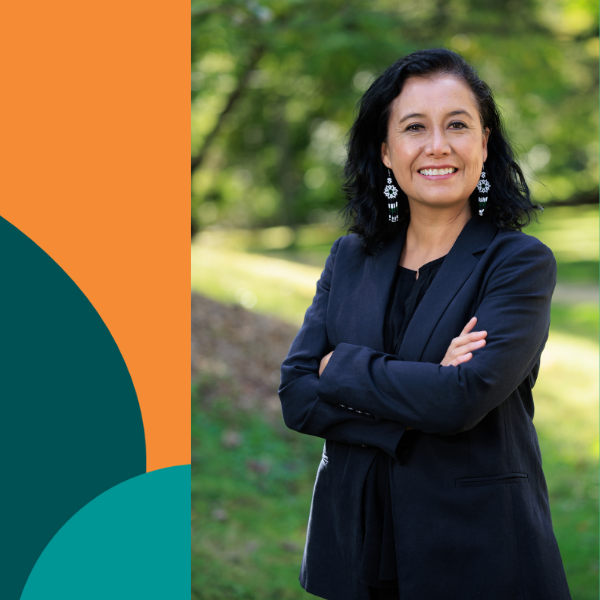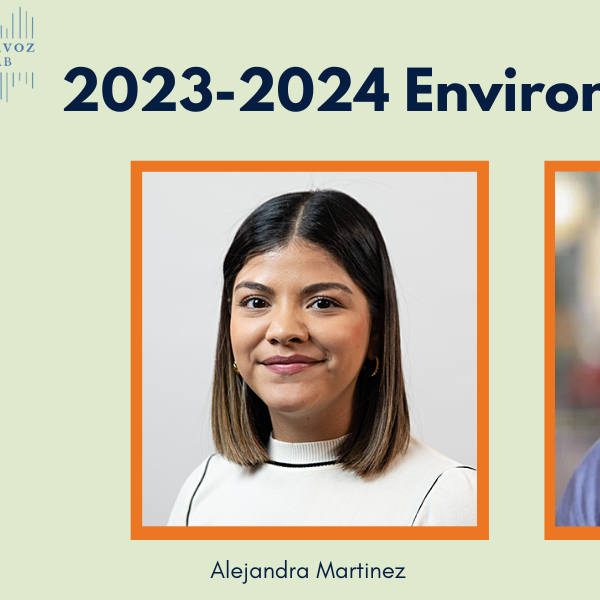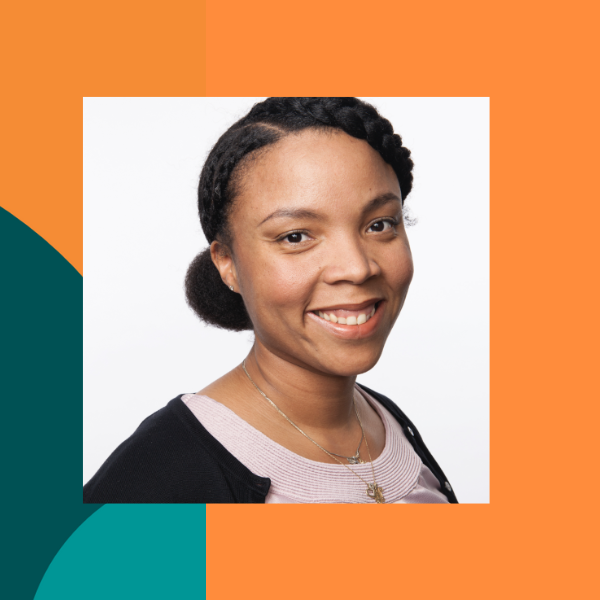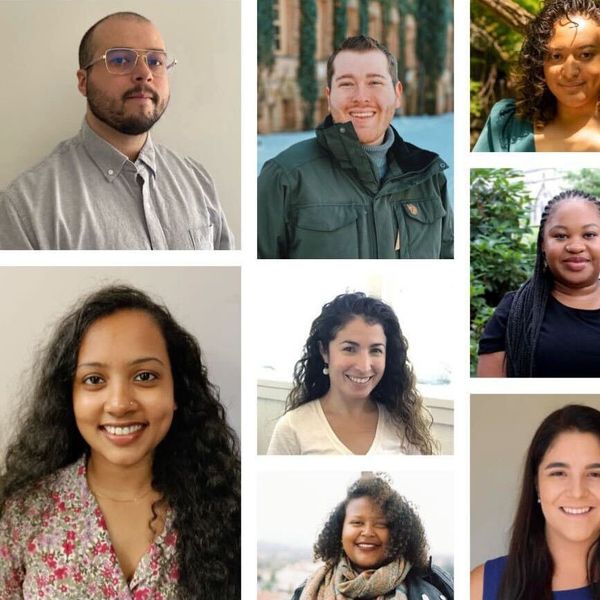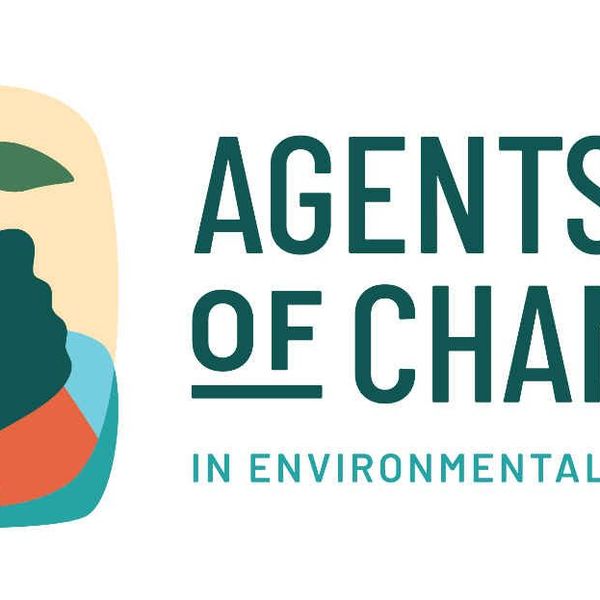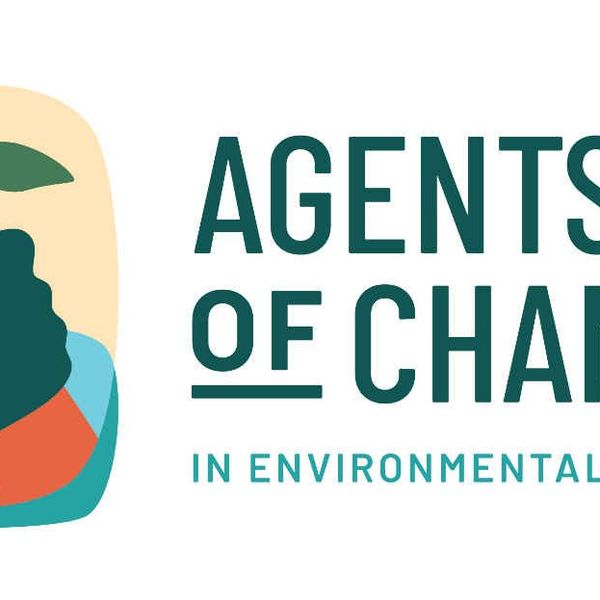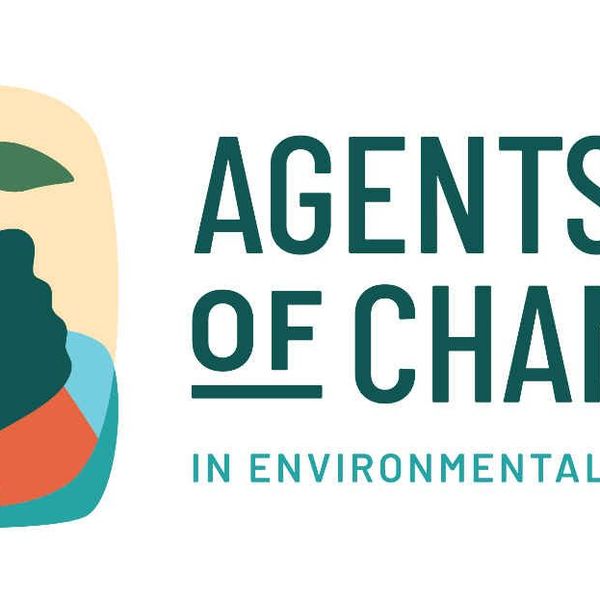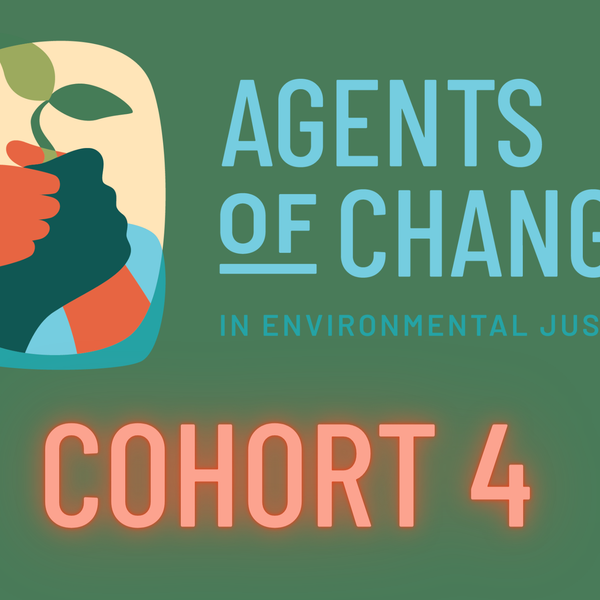The little boy helping me measure the back foot of an adult American alligator shyly thanks me as he gently touches its tail. His eyes light up as the male gator draws in a large breath, filling his massive nine-foot body with air. The gator lets out a slow growl and the boy's hand grabs mine.
I can tell that we will both remember this moment for a long time.
We release the animal back to his home, and the child runs back to his grandmother and older brother—they're both cautiously watching as they fish around the lake. He asked so many questions as we examined the health of the alligator during the field collection, and I want him to continue asking, continue to wonder.

Measuring the foot of an American alligator caught and released at Greenfield Lake, NC.
"How did you get into this?" he asked before running off. I'm happy he's interested, but saddened to know that, due to his skin color, his path to this career —wildlife biology and ecotoxicology—would be challenging. According to a recent analysis, people of color are 67% to 74% more likely to live in an area defined as "nature-deprived," which are areas with a high proportion of natural area lost to human development. If at a young age you are not exposed to 'green' areas, why would you want to pursue a nature or conservation-focused career?
Moments like these remind me that nature should be accessible to everyone.
This essay is part of "Agents of Change" — see the full series
Access to programs that provide opportunities for minorities, especially those living in big cities, to get outside and explore is important. As a Hispanic woman passionate about wildlife and environmental science, it is my goal to connect communities of color with nature, because creating inclusive spaces for all will help us better protect our environment.
But how can you want to protect something you don't experience?
Representation matters

Alligator hatching from egg in 2016 at Hollings Marine Laboratory, SC
Growing up in the urban sprawl of San Antonio, my reprieve was a fishing weekend with dad. Camping. Hiking. Any opportunity for anything outdoorsy and I shot out of bed like a rocket. Walking home from school, I'd take the backroads to spot snakes, birds, and lizards. I was inconsolable for a few days when that area was paved for housing. As I grew older, it became harder to find those areas to hike in and reconnect because of increased urban development and decreased natural areas. Every time I visit home, I'm shocked by the number of shopping centers and subdivisions.
I rediscovered these experiences in graduate school. I moved to the East Coast and started a career in environmental health science. In Charleston, I dove into fieldwork. Every new day, whether I was hopping around airboats in Florida looking for alligator nests or hiking for miles in South Africa to find crocodiles, renewed my passion for protecting wild places.
This essay is also available in Spanish
My research focuses on using wildlife species as 'canaries' for human health, and investigating how pollutants released into the environment affect the health of the ecosystem. This research allows me to pursue my passion for the outdoors, learn new things about wildlife, and ask questions that matter to communities.
At my first postdoc position, I helped create the SAFEwater-NC program at NC State where we examined alligators and fish to understand how per and polyfluoroalkyl substances (PFAS) impact aquatic ecosystems in coastal North Carolina. I found that fish and alligators living in areas downstream from fluorochemical manufacturing had high levels of PFAS within their body, and that this was associated with altered immune and liver function. This work led me to examine fish as a dietary source of PFAS for communities. Alligators and humans living near estuarine or coastal environments share similar dietary patterns – fish! By studying a long-lived reptile, we can better understand how dietary consumption of fish in PFAS-contaminated communities impacts humans.

American alligator hatchling capture and release at Lake Waccamaw, NC
But within this line of research, I've also found there is a stark diversity problem. I've rarely encountered people that look like me in fieldwork. Principal investigators leading projects in the field are overwhelmingly white, overwhelmingly male, and overwhelmingly homogenous.
This stems from a lack of paid opportunities for conservation and nature-focused careers, and too few diverse mentors in leadership positions (academia, non-profit and government). In the beginning of my undergraduate career, I was lucky to land a paid research fellowship – and this completely changed my trajectory from pre-medical school to a research focused track. In my community, if you were smart and science-focused, medical school was the answer. Paid opportunities like undergraduate research fellowships or grants are integral to diversifying research, because they ease financial pressure and give young researchers skills needed for graduate school. Unpaid internships are rampant in conservation and wildlife science, and it creates barriers.
Lack of representation in leadership positions at work also creates barriers for people of color. My graduate university had no Hispanic faculty in the Environmental Health Program, and, though I was a part of a fellowship to maximize diversity, I had only one professor of color. This created the idea that I didn't belong. This continued into my first postdoctoral position, and didn't change until I met a Puerto-Rican branch chief within the Center for Environmental Measurement and Modeling at the U.S. EPA.
This spurred me to apply for positions within the EPA, because I saw hope. This is why representation matters – it gives a sense of belonging when you feel completely alone.Creating space for all in the outdoors

Measuring the head and body of 10 foot + American alligator at Cape Fear River, NC.

Juvenile American alligator hiding in the swamp at Lake Waccamaw, NC.
In environmental genetics, homogeneity is often criticized because when "all individuals are the same, a disease, insect pest, or environmental change that can kill one individual can extirpate an entire crop." I'd argue that the same concept applies to our careers. Promoting diversity can only lead to more innovation. With so many challenges within environmental health—climate change, emerging persistent chemicals—we need an injection of innovation.
We need to create space for BIPOC ( Black, Indigenous, people of color) to exists in these areas, to feel comfortable in fieldwork, or even just outdoor activities. But first, let's change the narrative that Black and Brown people don't like the outdoors. Black Birder's week , the annual weeklong online events to promote the visibility of Black birders, shattered that assumption. I was inspired and awed by the passion of doctoral students, Corina Newsome (co-founder of Black Birder's week) and Earyn McGee (creator of #Findthatlizard).
These incredible scientific communicators are changing the narrative that people of color are not "outdoorsy," or that they do not appreciate or engage in recreational outdoor activities. Rather, they demonstrate that despite systemic barriers to entry into the wildlife, conservation and STEM (science, technology, engineering and math) careers, individuals can persevere and create change through taking control of the story.
But how do we create space for underrepresented minorities to exist and thrive in environmental science?
One way is to prioritize investment in urban forests and greenspaces. Trees are great for cities because they are natural air conditioning, sequester carbon, and offer shady spaces in urban sprawls. Wildlife corridors, or spaces where wild animals can safely travel, are also important for cities to consider as they help wildlife move and propagate in busy cities. Creating equitable green space in communities should always include local buy-in from communities, and engage with the community members at every stage of the process.
Another way, as highlighted by #Blackinstem groups on Twitter, is to promote the visibility of BIPOC scientists to younger students. Representation of underrepresented groups in environmentally-focused careers and showcasing the diversity of talented scientists within this field will help younger generations see that this career is possible. Thankfully, the pandemic has bolstered educators and scientists' abilities to connect online with classrooms.
Lastly, we need to stop with unpaid internships. This is a huge barrier for young BIPOC researchers. I realize that not every organization can afford to do this, especially small university labs or non-profits. If this is the case, encourage and engage with your students to apply for small grants.
Growing up, getting outside was important to my development as a curious and creative scientist. The things I've learned fishing with dad have stayed with me throughout my career, like how to tie a Bimini knot! My passion for the outdoors led me to graduate school, and now I aim to inspire others that don't feel welcome in outdoor spaces to pursue environmental science careers.
I hope that little boy I met at Greenfield Lake knows how much he inspired me, and that shared moment was as special to him as it was to me. Seeing the curiosity in his eyes, I know he will make a great scientist.
This essay was produced through the Agents of Change in Environmental Justice fellowship. Agents of Change empowers emerging leaders from historically excluded backgrounds in science and academia to reimagine solutions for a just and healthy planet.
Banner photo: Juvenile alligator checked for a health assessment at Lake Waccamaw, NC.
All photos credit: Theresa C. Guillette

